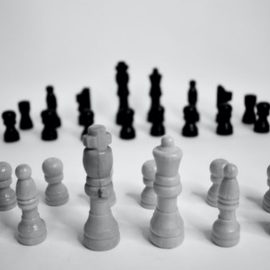

This article is an excerpt from the Shortform book guide to "Evicted" by Matthew Desmond. Shortform has the world's best summaries and analyses of books you should be reading.
Like this article? Sign up for a free trial here.
Is housing discrimination still around today? How do landlords get around discrimination laws?
Despite being outlawed in 1968, housing discrimination toward minorities is still prevalent today. The discrimination creates further problems, forcing minorities into poor neighborhoods and restricting their access to education and healthcare.
Keep reading for further insights into the present housing discrimination problem.
Discrimination Is Illegal, but Still Very Common
Poverty and eviction can happen to anyone, but Desmond says that minorities—especially Black people—are disproportionately affected by them.
The Civil Rights Act of 1968 made housing discrimination illegal, meaning that landlords couldn’t reject people on the basis of race or create racially segregated neighborhoods; it also prohibited discrimination based on sex, nationality, and religion. However, housing discrimination persists in numerous ways.
Desmond explains that although it became illegal to explicitly discriminate based on people’s demographics, landlords could accomplish the same thing using perfectly legal screening procedures. For a small fee, landlords can obtain a person’s criminal record, eviction history, credit score, and other information allowing them to decide whether that person is worth renting to. Because of the numerous disadvantages that Black people and other minorities face—which we’ll explain in more detail in the next section—these screening practices hurt minorities by locking them out of many opportunities that their white neighbors can take advantage of.
Furthermore, most of the same landlords who rejected low-income people also rejected people with criminal records, especially violent criminals. As a result, over decades and with landlords making countless such decisions, modern American cities became strongly segregated: Wealth and safety became concentrated in certain areas, poverty and violent crime in others.
Desmond adds that discrimination is a self-perpetuating problem. The people who are forced to live in poor neighborhoods have reduced access to education, healthcare, and other necessities. As a result, it’s unlikely that they or their children will ever be able to improve their situation—they’ll be stuck in the same low-wage jobs (or have no jobs at all), using every resource they have just to stay alive.
| How Supposedly Objective Models Reinforce Discrimination Desmond, intentionally or not, implies that deliberate racism is largely driving housing discrimination. While that was undoubtedly true in the past (as we’ll explain in the upcoming section) many people today make racially biased decisions while believing that race doesn’t play a role in their choices at all. As data scientist Cathy O’Neil writes in Weapons of Math Destruction, even mathematical models and computer programs, which in theory are perfectly objective, can reinforce systemic biases. Because these models use historical data to predict future outcomes, they unintentionally discriminate against people from groups that have been disadvantaged in the past, such as minorities. For instance, if a loan model is trained on data from an era of discriminatory housing practices, it could unfairly reject loan applications from Black applicants. Similarly, predictive policing models can unjustly target impoverished neighborhoods or minority communities because they use historical crime data, which may be influenced by past over-policing in these areas. |

———End of Preview———
Like what you just read? Read the rest of the world's best book summary and analysis of Matthew Desmond's "Evicted" at Shortform.
Here's what you'll find in our full Evicted summary:
- Why the rate of evictions in the US is even higher now than it was during the Great Depression
- How poverty and eviction each lead to the other
- Ways we can empower citizens to break the cycle of poverty and eviction






